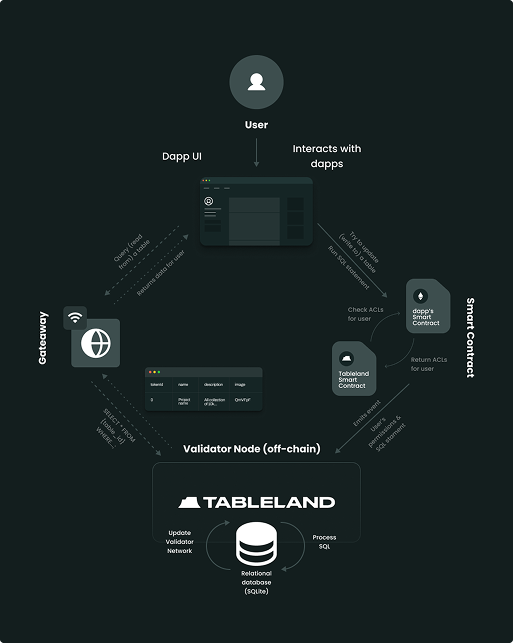Journey from Tableland to Recall
2022 was a crazy year for crypto. Earlier that year, there was boundless euphoria. People were willing to pay half a million dollars for an ugly picture of a monkey. Towards the end, the euphoria cooled down as the bubble popped. A chain of events that started with the explosion of Terra/Luna and ended with the collapse of FTX.
2022 was also the year when I took a sabbatical. I was wondering what to work on next. Sometime around June, I got in touch with the Textile team to work on their IPFS tooling as a part-time contractor. Later that year, I decided to join the team full-time to work on Tableland. Before the bubble popped, NFT projects were thriving, and Tableland was starting to get some usage.
 |
|---|
| this is fine |
Let me briefly describe Tableland at this point. In a nutshell, it is an off-chain database that is driven through onchain events. Every table is represented as an NFT onchain. Any wallet with adequate permissions can write to the table. All tables are public for anyone to read. You could simply spin up a Tableland node, and your database will be synced in a few minutes.
The Tableland node builds on top of SQLite and listens to EVM events. Every insert or update SQL query is sent to a specific contract. The underlying EVM blockchain determines the order of events. So, there is no need for a consensus protocol at the Tableland layer. The node simply extracts the queries from the event stream and materializes them into its local database.
 |
|---|
| Tableland Architecture |
The NFT projects liked Tableland because it enabled them to store and update the NFT metadata in a structured way. Tableland also has sophisticated ACL features. For instance, you could restrict a user to write on a table based on which NFTs they hold or if they are part of a DAO or whatnot. However, no one actually used these features to their full potential.
After the bubble popped in late 2022, most teams working on such NFT projects vanished and never returned, even after the market conditions improved in late 2023 and early 2024.
During this time, some DePin projects expressed interest in using Tableland. However, their requirements were different. They wanted an open database with a high write throughput but didn't care about table schemas or structured data.
Tableland's write throughput is fundamentally bound by the block time of the underlying blockchain. This inspired us to work on an open object storage system. This time, we built using Tendermint with a bespoke validator set. It is a sidechain that checkpoints to Filecoin. Essentially, you can think of it as Filecoin layer 2.
We initially called it Basin but later renamed it Recall. In the last few months, as we have seen AI agents take off, we are exploring the possibility of using Recall to store agents' context windows. This would make the context window shareable in a permissionless way, making AI agents composable.
I will write more about it in the future as the protocol evolves. Meanwhile, you can take a look at the docs and feel free to reach out to me on X or Farcaster.